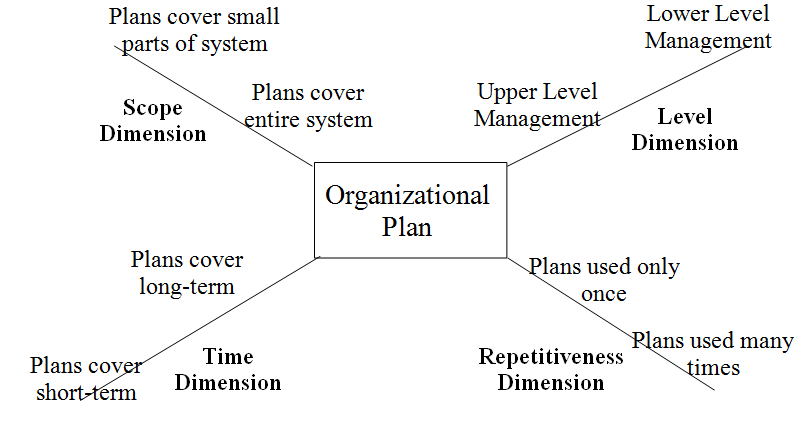Before illustrating the main types of plans and applications, let us present the major dimensions of plans in Figure 1.5.

Figure 1.5: Major dimensions of plans
Where;
a) Repetitiveness dimension of a plan refers to the extent to which the plan is used over and over again. Some plans are specially designed for one situation that is relatively short-term in nature. Other plans are designed to be used time after time for long-term recurring situations.
b) The time dimension refers to the length of time the plan covers. Strategic planning was defined as long- term in nature, while tactical planning was defined as short- termed.
c) The scope dimension refers to the proportion of the total management system at which the plan is aimed. Some plans are designed to cover the entire open management system. This plan is often referred to as a master plan. Other plans are developed to cover only a portion of management system.
d) The level dimension refers to the level of the organization at which the plan is aimed. Top level plans are those designed for the organizationís top management, whereas middle and lower level plans are designed for middle and lower management.
|
The planís four major dimensions are: ∑ Repetitiveness ∑ Time ∑ Scope ∑ Level |
Based on the previous discussion about the planís dimensions; we can summarize the most common types of plans according to the repetitiveness dimension in Figure 1.6.

Figure 1.6: Types of plans